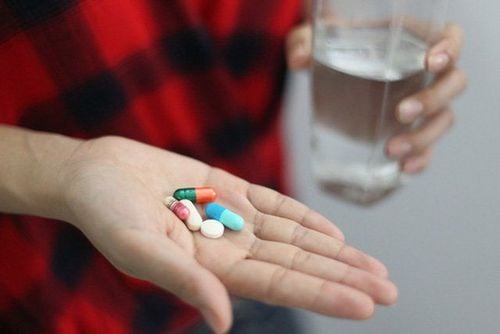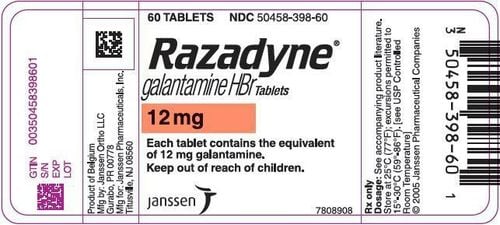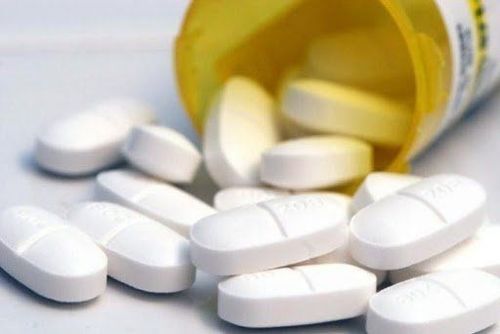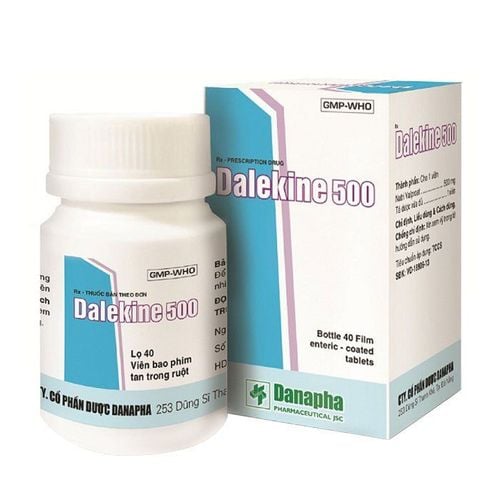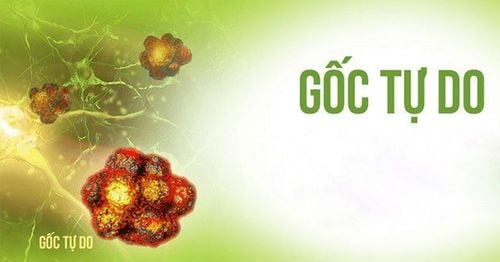This is an automatically translated article.
Dalekine 500 has the main active ingredient sodium valproate 500mg. The mechanism of action of the drug is through the inhibitor of the neurotransmitter gamma - aminobutyric acid (GABA). Medications are often indicated in the treatment of many different types of seizures.
1. What does Dalekine 500 do?
The main ingredient of Dalekine 500 is sodium valproate 500 mg. The mechanism of action of the drug is to increase the delivery of gamma-aminobutyric acid (GABA), an inhibitory neurotransmitter, to brain neurons or can enhance or mimic GABA activity at postsynaptic receptor sites. At the same time, the drug also acts to block voltage-dependent sodium channels, resulting in the inhibition of repetitive neuronal activation at high frequency. Therefore, valproate can be used in many different types of seizures.Valproate is rapidly absorbed after oral administration. Peak plasma concentrations are reached approximately 1 - 4 hours after a single dose. When taken with food, the drug is absorbed more slowly, but generally does not affect the total amount absorbed. The plasma half-life of valproate is approximately 6-16 hours. Valproate is highly bound to plasma proteins at therapeutic doses (approximately 90%), but the binding is concentration dependent and decreases at high valproate concentrations. The drug is metabolized mainly in the liver and eliminated in the urine. Clearance was faster in children receiving other anticonvulsants and in younger children, and children > 10 years had the same pharmacokinetic parameters as adults.
2. When is Dalekine 500 used?
Dalekine 500 is indicated in the following cases:
Epilepsy: It can be used alone or in combination in some types of seizures such as absence seizures, generalized seizures (grand seizures), seizures. myoclonus, atony, and complex seizures. Support treatment for patients with many types of attacks, all over the body.
3. Dosage of the drug Dalekine
Dalekine is taken orally. The patient should swallow the tablet whole, do not chew or break the tablet. The daily dose varies according to the age, weight, and clinical response of the patient.
The usual starting dose is 10 - 15 mg/kg/day and gradually increased to an optimal dose of about 20 - 30 mg/kg/day. However, if the patient does not control seizures with this dose, the dose may be increased to 50 mg/kg/day and the patient should be carefully monitored. Children: The usual dose is 30 mg/kg/day. Elderly: The usual dose in the elderly is lower than that in adults. Patients should strictly follow the dosage prescribed by their doctor. In particular, girls, female adolescents, women of childbearing age and pregnant women: Dalekine should be initiated and closely monitored. by a doctor with extensive experience in the treatment of epilepsy. Dalekine should only be used when other treatments have not been effective. Ideally, Dalekine should be prescribed at the lowest effective therapeutic dose. If possible, the patient should be given the extended-release formulation to avoid excessive peak plasma concentrations. The daily dose should be divided into at least two single doses.
4. What are the contraindications for Dalekine?
Dalekine should not be used in the following cases:
Acute and chronic hepatitis, family history of severe hepatitis, especially drug-induced hepatitis. Hypersensitivity to sodium valproate or any of the excipients in the formulation. Patients with impaired metabolism of porphyrins.
5. Side effects of the drug Dalekine
Common:
Dermatology: Hair loss Digestive: Abdominal pain, anorexia, diarrhea, dyspepsia, nausea, vomiting Hematology: Thrombocytopenia Nervous system: Dizziness, somnolence, headache, insomnia , anxiety, pain Neuromusculoskeletal: Asthenia, tremor Ophthalmology: myopia, visual disturbances (decreased vision, blurred vision) Respiratory: Flu-like symptoms Other: Accidental injury, infection Infection Uncommon:
Cardiovascular: Arrhythmia, chest pain, edema, hypertension, hypotension, palpitations, peripheral edema, tachycardia, vasodilation papules Endocrine and metabolic: amenorrhea, menstrual irregularities, weight gain or loss Liver: Severe hepatotoxicity (liver necrosis and possibly death) in children under 3 years of age. Neurological: agitation, hallucinations, abnormal dreams, language disorders Urology: Enuresis , increased frequency of urination Rare
Body as a whole: Headache. Blood: Severe thrombocytopenia and leukopenia, increased bleeding, anemia, eosinophilia, decreased fibrinogen. Gastrointestinal: constipation, pancreatitis Skin: Subcutaneous effusion. Hepatic: Severe toxicity occurs in children over 3 years of age. Neurological: Paresthesia, ataxia, movement disorder Psychiatric: Psychosis, confusion, depression
6. Notes when using the drug Dalekine
During the use of Dalekine, patients should pay attention to the following issues:
Acute head injury: It should not be used for post-traumatic prophylaxis in patients with acute head trauma. . Dementia: Not recommended for the treatment of agitation or aggression associated with dementia. Evidence suggests that this indication lacks efficacy and increases the risk of side effects Elderly: Use Dalekine with caution, as elderly patients may be more sensitive to sedation and dehydration. In some elderly patients with somnolence, there may be decreased nutritional intake and weight loss. Reduce initial dose in elderly patients and monitor fluid status, nutritional intake, somnolence, and other adverse events closely. Viral Replication: In vitro studies have shown that valproate stimulates HIV and CMV viral replication under experimental conditions. The clinical consequences of this are unknown, but should be considered when monitoring patients. Withdrawal: Antiepileptic drugs should not be stopped abruptly because of the potential for increased seizure frequency. Therapy should be discontinued gradually to minimize the possibility of seizures, unless safety concerns require early discontinuation. Patients should have liver function tested prior to initiation of therapy and periodically for 6 months, especially in high-risk patients. For persons at high risk of hepatotoxicity and children < 2 years of age, sodium valproate should be used as monotherapy. Dalekine should be discontinued immediately in the event of a suspected or symptomatic change in liver function. In some cases, liver function impairment may still progress despite discontinuation of the drug. Dalekine can cause severe thrombocytopenia, inhibition of platelet aggregation and bleeding. Hypothermia has been reported in some patients receiving valproic, which may or may not be related to hyperammonemia, particularly when used in combination with topiramate. Valproate may cause central nervous system depression, especially when combined with other CNS depressants (eg, alcohol). Therefore, patients should not engage in activities that require alertness, such as driving or operating machinery. Pregnancy: Valproate can cause major birth defects, especially neural tube defects (eg, spina bifida). In addition, valproate may cause decreased IQ scores and post-exposure neurodevelopmental disorders. Neural tube defects, craniofacial anomalies (eg, cleft palate, scoliosis), cardiovascular malformations, dyskinesia, and limb malformations (eg clubfoot, multiple malformations) have been reported. reported. Due to the risk of adverse fetal events, valproate is contraindicated for the prevention of migraine in pregnant patients. Valproate should not be used to treat pregnant patients with epilepsy or bipolar disorder unless other medications cannot provide adequate symptom control or cannot be tolerated. Current guidelines recommend complete avoidance of valproate for the treatment of epilepsy in pregnant patients whenever possible. If use is required, serum concentrations should be monitored before and during pregnancy. Coagulation factor abnormalities (reduced fibrinemia, thrombocytopenia, or other clotting factors) may develop in the mother following valproate use during pregnancy. Close monitoring of clotting factors is recommended. Lactation: Dalekine may be excreted in breast milk. According to the manufacturer, the decision to breastfeed during treatment should consider the risk of drug exposure to the infant, the benefits of breastfeeding, and the benefit of the treatment to the mother. Infants exposed to valproate through breast milk should be monitored for signs of liver damage, including jaundice, unusual bruising or bleeding. Above is information about the effects, dosage and notes when using Dalekine-500. The drug can cause many side effects, especially liver toxicity, and can be fatal. Therefore, patients should not self-medicate, but should consult a specialist before using.
Follow Vinmec International General Hospital website to get more health, nutrition and beauty information to protect the health of yourself and your loved ones in your family.
Please dial HOTLINE for more information or register for an appointment HERE. Download MyVinmec app to make appointments faster and to manage your bookings easily.




